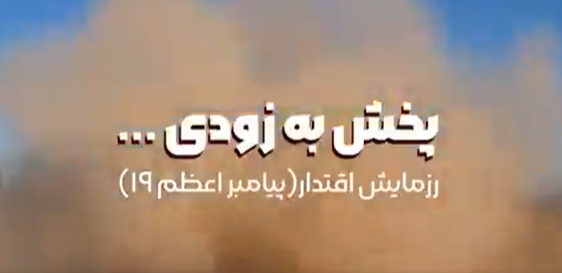Iran recently demonstrated its advanced air defense capabilities during the Great Prophet 19 military exercises, a series of drills that have captured significant attention due to their scope and the high-tech systems showcased. These exercises, held near key sites like the Natanz nuclear facility, are not just a display of military strength but also a powerful statement about Iran’s growing strategic role in the Middle East.
A Demonstration of Power: The Great Prophet 19 Exercises
The Great Prophet 19 drills included a variety of systems, among which the Loitering SAM "358" missile stood out. This missile has made headlines for its ability to down high-value targets such as the U.S. MQ-9 Reaper drones. The fact that Iran chose to display this missile, along with other sophisticated air defense technologies, sends a clear message about its military capabilities, particularly its growing proficiency in countering aerial threats.
These exercises, held near sensitive sites like the Natanz nuclear facility, are not only a demonstration of Tehran’s defensive postures but also an indication of its readiness to protect its interests, including its nuclear program, from potential external threats.
Implications for Regional Security
The timing of the Great Prophet 19 drills is crucial. The Middle East has long been a volatile region with ongoing conflicts, shifting alliances, and rivalries. Iran’s increased military capabilities, especially in air defense, could shift the security balance in the region. For neighboring countries and global powers like the United States and Israel, these developments might signal a growing challenge to their strategic interests in the area.
For regional powers such as Saudi Arabia and the UAE, which have been critical of Iran’s military activities, these drills could prompt a re-evaluation of their own defense strategies. In response, it’s possible that we could see these countries increasing their investments in advanced air defense systems, or perhaps even forging stronger military partnerships with external powers like the U.S. or Israel.
Rising Tensions: A New Arms Race?
The increasing focus on air defense systems in Iran could also be indicative of a larger arms race in the Middle East. As more countries in the region pursue advanced weaponry to counter potential threats, the risk of escalation rises. In this context, Iran’s growing air defense infrastructure could provoke further tensions, especially if regional rivals perceive it as a direct threat to their own security.
Additionally, the United States and Israel are likely to scrutinize Iran’s military advancements more closely. Both countries have historically viewed Iran’s nuclear ambitions and military capabilities with suspicion, often warning about the potential for nuclear proliferation and military conflict. As Iran continues to strengthen its air defense systems, the possibility of future confrontations could increase, particularly if tensions over Iran’s nuclear program intensify.
The Bigger Picture: Iran’s Strategy Beyond Defense
While the immediate focus is on Iran’s air defense advancements, it’s important to consider these developments within the broader context of Tehran’s strategic objectives. Iran’s military activities, including missile development, naval maneuvers, and drone technology, all point to a broader strategy of deterrence and regional influence. The Great Prophet 19 exercises are just one example of how Iran is seeking to assert itself as a regional power capable of challenging both local and global adversaries.
Tehran’s air defense systems are part of a larger effort to protect its nuclear program and its territorial interests. The exercises near Natanz are especially significant given that this facility is central to Iran’s nuclear ambitions, and demonstrating its ability to defend such sites from aerial threats underscores Tehran’s desire for strategic autonomy.
What Comes Next?
The Great Prophet 19 exercises serve as a reminder of the dynamic and often unpredictable nature of Middle Eastern geopolitics. With countries in the region constantly seeking to balance power, build alliances, and deter adversaries, Iran’s military buildup, especially in air defense, will certainly have lasting implications.
As other countries in the region assess the effectiveness of Iran's newly showcased systems, there may be a push to develop similar technologies or form new defense pacts. Meanwhile, Iran's military exercises will likely continue to provoke debate about its nuclear ambitions and the stability of the region.
For global powers like the U.S., Israel, and Russia, the key question will be how to manage Iran’s rising influence without further escalating tensions. Whether these air defense drills spark a new arms race or prompt diplomatic engagement remains to be seen.
Iran’s recent military exercises underscore its growing capabilities and strategic aspirations in the Middle East. As it continues to develop its air defense systems and other military technologies, the potential for regional shifts in power increases. For neighboring countries, as well as global powers, it’s clear that Iran’s military ambitions are something that can’t be ignored.
As we watch how these developments unfold, one thing is certain: the security landscape in the Middle East will continue to evolve, with new challenges and potential confrontations on the horizon.

